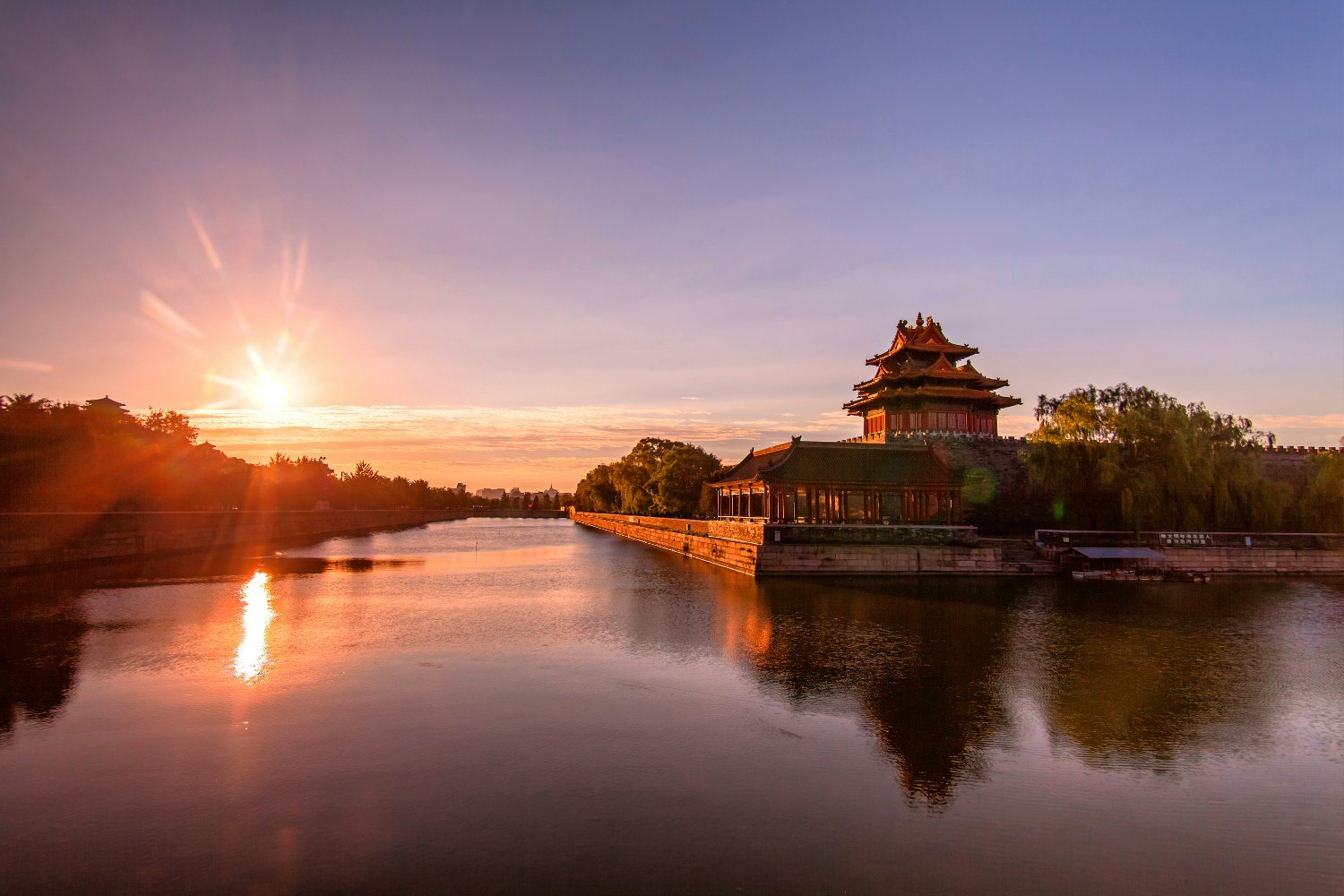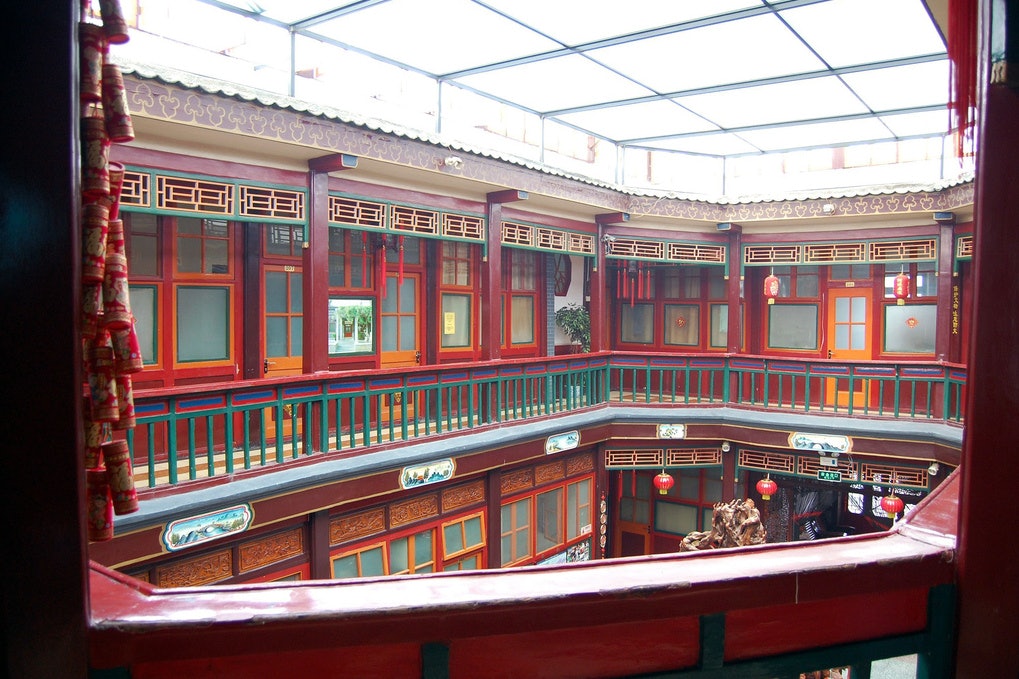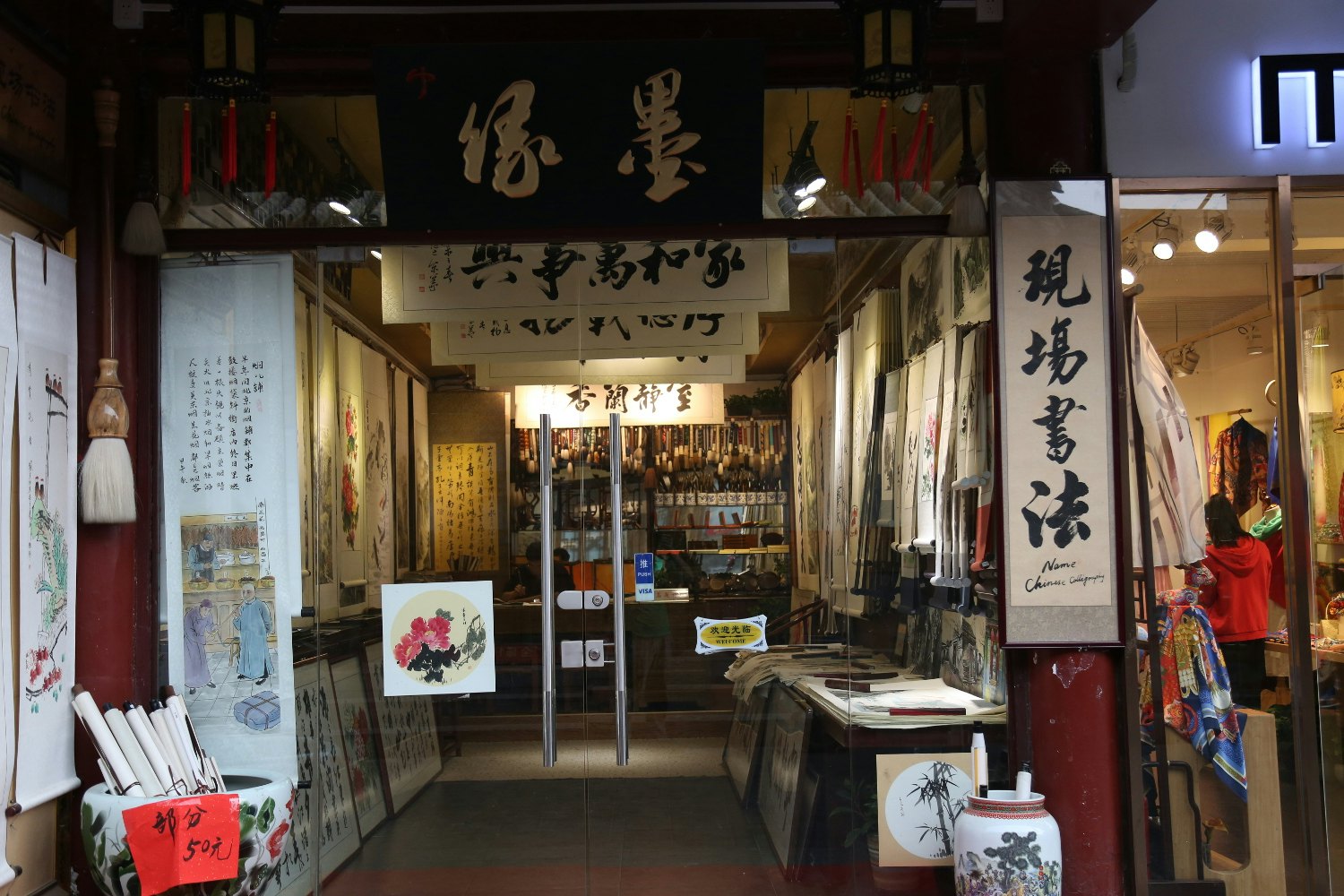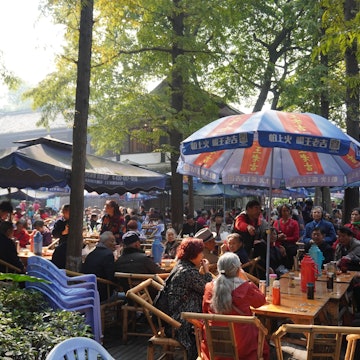

Perfect cheap sundowner: wine along the Forbidden City's moat. Image by CZQS2000 / STS / Getty
China’s breakneck rise – in 2014 it became the country with the world’s biggest economy – means that it’s no longer quite the budget destination it used to be. Indeed, the latest comparisons for costs of living put Beijing in the top 20 most expensive cities in the world.
That doesn't mean that you have to spend a bundle on your trip to China's capital city. We’ve sculled the secrets of locals and long-term expats to give you the lowdown on how to enjoy Beijing without rolling out the rénmínbì.

Five bargain stays
The cheapest places to stay in Beijing come in the form of guesthouse dorm beds (anything from four to 10 people) and they can be found all over the city.

1. For the best atmosphere, choose a courtyard hostel. A long-term favourite and possibly the best bargain of the lot is Leo Hostel (and its sister establishment, the quainter Leo Courtyard). Both are in prime tourist real estate – just south of Tian'anmen Square.
2. Another courtyard option is the quirky martial arts-inspired Fly By Knight Beijing Courtyard Hostel, which throws in a free western breakfast and offers free accommodation for writers or artists who teach a skill or write about the venue in exchange.
3. If you’d rather not do dorms, The Drum – Specialist Capsule Hostel & Hotel, in Beijing’s beautiful historical Gulou district, has cheap self-contained capsules that are just big enough for a bed and a spot on the floor for your bags.
4. Chain hotels are characterless but cut-priced and 7 Days Inn, with their distinctive yellow buildings, have more than a dozen premises in Beijing from Tian'anmen Square to the 798 Art District.
5. Finally, you can pick up great value rooms from sites like Airbnb (airbnb.com), which have become increasingly popular in China and can offer an insider look at Beijing life. Hosts sometimes throw in the use of a free bike too.
Five economical eats
Dine local to keep costs down. Western food is almost always more expensive in Beijing, and probably not quite what you were expecting. If you order too much, it’s common to dǎbāo (打包 – box up and take away) leftovers. Grab a spare pair of chopsticks and enjoy later as a picnic in a park. 7-11s also sell a cheap range of Japanese sushi rolls (usually fresher in the morning after a delivery).

1. Zhang Mama is famous for its intensely spicy Sichuan classics, such as mala xiangguo, a spicy broth with a variety of meat choices. This no-frills but tongue-tingling venue is a 10-minute walk from the Drum Tower.
2. Qing Feng Steamed Dumpling Shop, a chain canteen of Beijing staples, shot to fame in late 2013 when Chinese president Xi Jinping was photographed paying for his own steamed buns at the 3 Yuetan Beilu branch. There are outlets all over the capital, but we recommend this one just for the kudos of eating where the Chairman does.
3. Xian Lao Man (252 Andingmen Neilu), a bustling joint and secret expat favourite, serves delectable dumplings and other authentic northern Chinese dishes. The menu is immense, but the classic madoufu (麻豆腐) – a mountain of pulped mung beans – is truly unmissable. There are several branches, but the most central one is one block from the Lama Temple on Andingmen Lu.
4. Jingzun is oft-cited as the budget choice for Peking duck (a bird with all the trimmings costs only ¥128 here). It’s on Chunxiu Lu, a short walk from the Sanlitun bar district.
5. China’s Muslim Uighur minority run some of the cheapest and heartiest restaurants around – think spicy lamb kebabs, thick noodles with chicken, tomatoes and herbs, and aromatic flat breads. Just across from the east bank of Houhai Lake in Mao’er Hutong is Xinjiang Fengwei Restaurant (新疆风味), one of the best. Otherwise, look out for the green signs or sizzle of kebabs being cooked out front of dozens of other Uigher-run restaurants around the city.
Five fun free things to do

1. The political and symbolic heart of communist China is Tian'anmen Square and there’s plenty of free fun to be had here: watch the flag ceremony at dawn and dusk; spot the undercover security guards on the Square; gaze up at Mao’s portrait casting a watchful eye from the north end; browse through the prehistoric jade and Qing-era artifacts in the National Museum; view Mao’s waxy remains in his mausoleum or take photos of the curvy National Centre for the Performing Arts (the Egg), one block to the west.
2. Beijing's hútòng (alleyways) are living examples of history, offering Instagram moments with their twisted trees, ancient beams, tucked-away temples, and locals fanning themselves on sultry summer evenings. The best hútòng are north of the Forbidden City and webbed into the Gulou and Dongsi districts.
3. Guomao is home to contemporary China with its glass-eyed skyscrapers and bold architecture. It's a dusty concrete jungle at ground level, but head to the Atmosphere Bar in the Shangri-La on the 80th floor of the China World Trade Centre for sweeping aerial views of the city (on a smog-free day). While this will cost you the price of a drink, it’s a bargain when you consider the observation deck in the CCTV Tower swallows ¥70 (and that’s without a cocktail).
4. The Midnight in Peking Audio Walk (us.midnightinpeking.com/audio-walk) is based on a novel by Paul French. The free map and audio tour provide a great framework for exploring one of Beijing’s most curious districts – the Legation Quarter. This grid of leafy streets just east of Tian'anmen Square was the home of foreign missions during the Qing Dynasty.
5. Beijing’s parks, green pockets of relief from pollution, are free or just a handful of rénmínbì to get in. They offer plenty of people-watching opportunities: Temple of Heaven Park is famous for its opera singers and marriage markets, Jingshan has lovely views of the Forbidden City, Purple Bamboo Park (zizhuyuangongyuan.com) is a classical Chinese garden, while Ditan is your best bet for a picnic on the grass (although watch out for eagle-eyed park wardens who very occasionally shoo people off the grass).
Five budget boozers
Alcohol can really rack up your daily budget. To keep costs down, drink chilled local beers (Yanjing and Snow are two popular brands) in street-side restaurants. It’s a good idea to stick to bottled beers in cheap bars, as cocktails are sometimes made with fake spirits.

1. Kai Bar (3/F, Tongli Studios) in Sanlitun has drawn the raucous crowds for years with its ¥10 drinks, and is now very gay-friendly.
2. One block from the Lama Temple, El Nido is a tumbledown hútòng bar with outside benches. Its imported beers are some of the cheapest in the city.
3. In the summer, grab a chilled bottle of white wine or a six pack from 7-11, and head to the moat around the Forbidden City for an evening of drinking fit for en emperor.
4. Some of the cheapest beers in town can be had at hostel bars. Beijing Downtown Backpackers has a busy attached pub in the Nanluoguxiang tourist lane, while The Drum – Specialist Capsule Hostel & Hotel promises every guest a free bar at its bar.
5. The university district of Haidian has a strip of banging budget boozers. Lush, with its pub quizzes and live music, is an enduring favourite.
Five tips to keep costs down

1. Avoid public holidays, such as Spring Festival in January/February and National Day in October, when it feels like China’s 1.4 billion are on the move. Hotels and guesthouses double or triple their rates and the capital is a crush.
2. Take public transport (besides, Beijing cabs are notoriously hard to flag down these days). The Beijing Subway (English signs and announcements) has improved its network in recent years and a single journey ranges from ¥3-6. Buses are trickier to use but if you get a Beijing Transportation Smart Card you pay half price, which means you’ll be paying less than ¥1 per trip (that's just US$0.16 for those keeping track!).
3. Avoid the well-known tourist markets (such as the Silk Market and Yashow Clothing Market) where they pump up the price for foreigners and the goods are often fake. Instead buy your gifts from local markets and shops. Some inexpensive gift ideas: packaged Chinese tea and Chinese sauces from a supermarket, paper cutouts and silk purses from Tian Yi Goods Market, and bolts of fabric from Muxiyuan Fabric Market (23 Dahongmen Lu, Fengtai district).
4. Turn roaming off and connect with friends and family online. While you won’t have access to sites like Facebook, Twitter and Gmail in China without a VPN, you’ll likely be able to use Skype and What’s App. Hostels generally have free wi-fi as do coffee shops (for the price of a drink).
5. You can almost always bargain in markets and shops. Decide on what you’re willing to pay beforehand, keep smiling, and walk away if the vendor won’t agree to your price. If they are willing to discount to your level, they’ll call you back.













